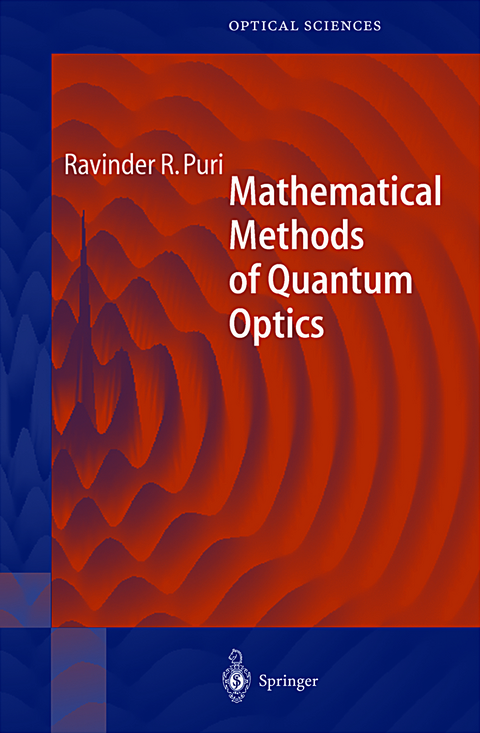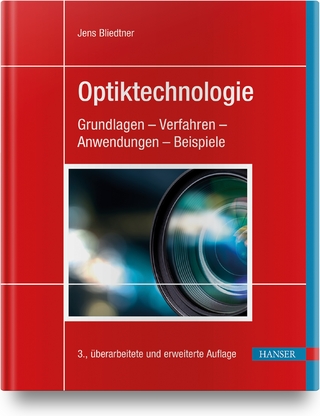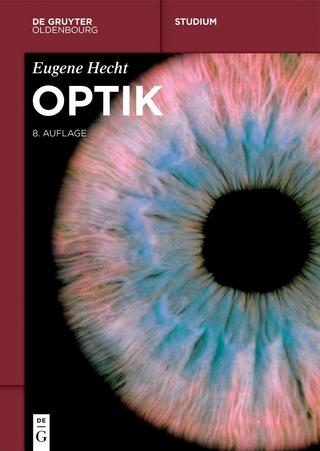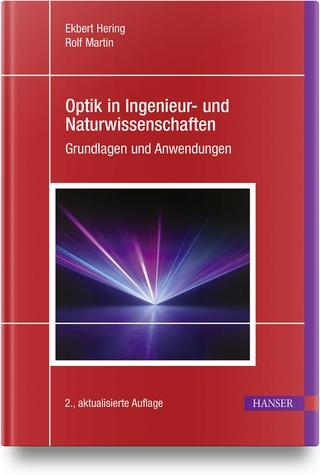
Mathematical Methods of Quantum Optics
Springer Berlin (Verlag)
978-3-642-08732-5 (ISBN)
1. Basic Quantum Mechanics.- 1.1 Postulates of Quantum Mechanics.- 1.2 Geometric Phase.- 1.3 Time-Dependent Approximation Method.- 1.4 Quantum Mechanics of a Composite System.- 1.5 Quantum Mechanics of a Subsystem and Density Operator.- 1.6 Systems of One and Two Spin-1/2s.- 1.7 Wave-Particle Duality.- 1.8 Measurement Postulate and Paradoxes of Quantum Theory.- 1.9 Local Hidden Variables Theory.- 2. Algebra of the Exponential Operator.- 2.1 Parametric Differentiation of the Exponential.- 2.2 Exponential of a Finite-Dimensional Operator.- 2.3 Lie Algebraic Similarity Transformations.- 2.4 Disentangling an Exponential.- 2.5 Time-Ordered Exponential Integral.- 3. Representations of Some Lie Algebras.- 3.1 Representation by Eigenvectors and Group Parameters.- 3.2 Representations of Harmonic Oscillator Algebra.- 3.3 Representations of SU(2).- 3.4 Representations of SU(1, 1).- 4. Quasiprobabilities and Non-classical States.- 4.1 Phase Space Distribution Functions.- 4.2 Phase Space Representation of Spins.- 4.3 Quasiprobabilitiy Distributions for Eigenvalues of Spin Components.- 4.4 Classical and Non-classical States.- 5. Theory of Stochastic Processes.- 5.1 Probability Distributions.- 5.2 Markov Processes.- 5.3 Detailed Balance.- 5.4 Liouville and Fokker-Planck Equations.- 5.5 Stochastic Differential Equations.- 5.6 Linear Equations with Additive Noise.- 5.7 Linear Equations with Multiplicative Noise.- 5.8 The Poisson Process.- 5.9 Stochastic Differential Equation Driven by Random Telegraph Noise.- 6. The Electromagnetic Field.- 6.1 Free Classical Field.- 6.2 Field Quantization.- 6.3 Statistical Properties of Classical Field.- 6.4 Statistical Properties of Quantized Field.- 6.5 Homodvned Detection.- 6.6 Spectrum.- 7. Atom-Field Interaction Hamiltonians.- 7.1 DipoleInteraction.- 7.2 Rotating Wave and Resonance Approximations.- 7.3 Two-Level Atom.- 7.4 Three-Level Atom.- 7.5 Effective Two-Level Atom.- 7.6 Multi-channel Models.- 7.7 Parametric Processes.- 7.8 Cavity QED.- 7.9 Moving Atom.- 8. Quantum Theory of Damping.- 8.1 The Master Equation.- 8.2 Solving a Master Equation.- 8.3 Multi-Time Average of System Operators.- 8.4 Bath of Harmonic Oscillators.- 8.5 Master Equation for a Harmonic Oscillator.- 8.6 Master Equation for Two-Level Atoms.- 8.7 aster Equation for a Three-Level Atom.- 8.8 Master Equation for Field Interacting with a Reservoir of Atoms.- 9. Linear and Nonlinear Response of a System in an External Field.- 9.1 Steady State of a System in an External Field.- 9.2 Optical Susceptibility.- 9.3 Rate of Absorption of Energy.- 9.4 Response in a Fluctuating Field.- 10. Solution of Linear Equations: Method of Eigenvector Expansion.- 10.1 Eigenvalues and Eigenvectors.- 10.2 Generalized Eigenvalues and Eigenvectors.- 10.3 Solution of Two-Term Difference-Differential Equation.- 10.4 Exactly Solvable Two- and Three-Term Recursion Relations.- 11. Two-Level and Three-Level Hamiltonian Systems.- 11.1 Exactly Solvable Two-Level Systems.- 11.2 N Two-Level Atoms in a Quantized Field.- 11.3 Exactly Solvable Three-Level Systems.- 11.4 Effective Two-Level Approximation.- 12. Dissipative Atomic Systems.- 12.1 Two-Level Atom in a Quasimonochromatic Field.- 12.2 N Two-Level Atoms in a Monochromatic Field.- 12.3 Two-Level Atoms in a Fluctuating Field.- 12.4 Driven Three-Level Atom.- 13. Dissipative Field Dynamics.- 13.1 Down-Conversion in a Damped Cavity.- 13.2 Field Interacting with a Two-Photon Reservoir.- 13.3 Reservoir in the Lambda Configuration.- 14. Dissipative Cavity QED.- 14.1 Two-Level Atoms in a Single-Mode Cavity.- 14.2 Strong Atom-Field Coupling.- 14.3 Response to an External Field.- 14.4 The Micromaser.- Appendices.- A. Some Mathematical Formulae.- B. Hypergeometric Equation.- C. Solution of Twoand Three-Dimensional Linear Equations.- D. Roots of a Polynomial.- References.
From the reviews of the first edition:
"This book provides an excellent introduction to the mathematical methods of quantum optics. It starts from the postulate of quantum mechanics, their mathematical consequences and paradoxes of quantum mechanics. Then, various SU algebras and representations of some Lie algebras are discussed. Then, stochastic processes, electromagnetic field quantization and atom-field interaction are presented. ... This textbook can be recommended to teachers, postgraduate students and researchers as a book covering all the relevant mathematical and theoretical techniques of quantum optics." (Lubomír Skála, Zentralblatt MATH, Vol. 1041 (16), 2004)
"There are several good textbooks on quantum optics and there are also good textbooks on the mathematical theory of coherent states, which is a related area. This book covers the material in the middle and presents the mathematical methods used in quantum optics. It covers the mathematical formalism of quantum mechanics, coherent states and related group theory, stochastic processes, atom-field interactions, two- and three-level systems, dissipation, etc. The material is clearly presented and it is suitable for postgraduate students and researchers in the field." (Apostolos Vourdas, Mathematical Reviews, Issue 2002 j)
"The initial overview of quantum mechanics is quite useful because of its conciseness and I feel that postgraduate students would benefit particularly from this. ... the question is whether this book adds sufficiently to this store of knowledge to be worth buying. Overall I think it does and I can certainly recommend quantum opticians ordering one for their institutional libraries. Those involved more with the theory on a daily basis may find it handy to have a copy in their office." (D. T. Pegg, The Physicist, Vol. 38 (5), 2001)
| Erscheint lt. Verlag | 3.12.2010 |
|---|---|
| Reihe/Serie | Springer Series in Optical Sciences |
| Zusatzinfo | XIII, 289 p. |
| Verlagsort | Berlin |
| Sprache | englisch |
| Maße | 155 x 235 mm |
| Gewicht | 463 g |
| Themenwelt | Naturwissenschaften ► Physik / Astronomie ► Optik |
| Naturwissenschaften ► Physik / Astronomie ► Quantenphysik | |
| Naturwissenschaften ► Physik / Astronomie ► Theoretische Physik | |
| Schlagworte | Absorption • Algebra • average • Equation • Finite • Function • Lie • Optics • quantum mechanics • Quantum Optics • Recursion • Variable |
| ISBN-10 | 3-642-08732-9 / 3642087329 |
| ISBN-13 | 978-3-642-08732-5 / 9783642087325 |
| Zustand | Neuware |
| Haben Sie eine Frage zum Produkt? |
aus dem Bereich


